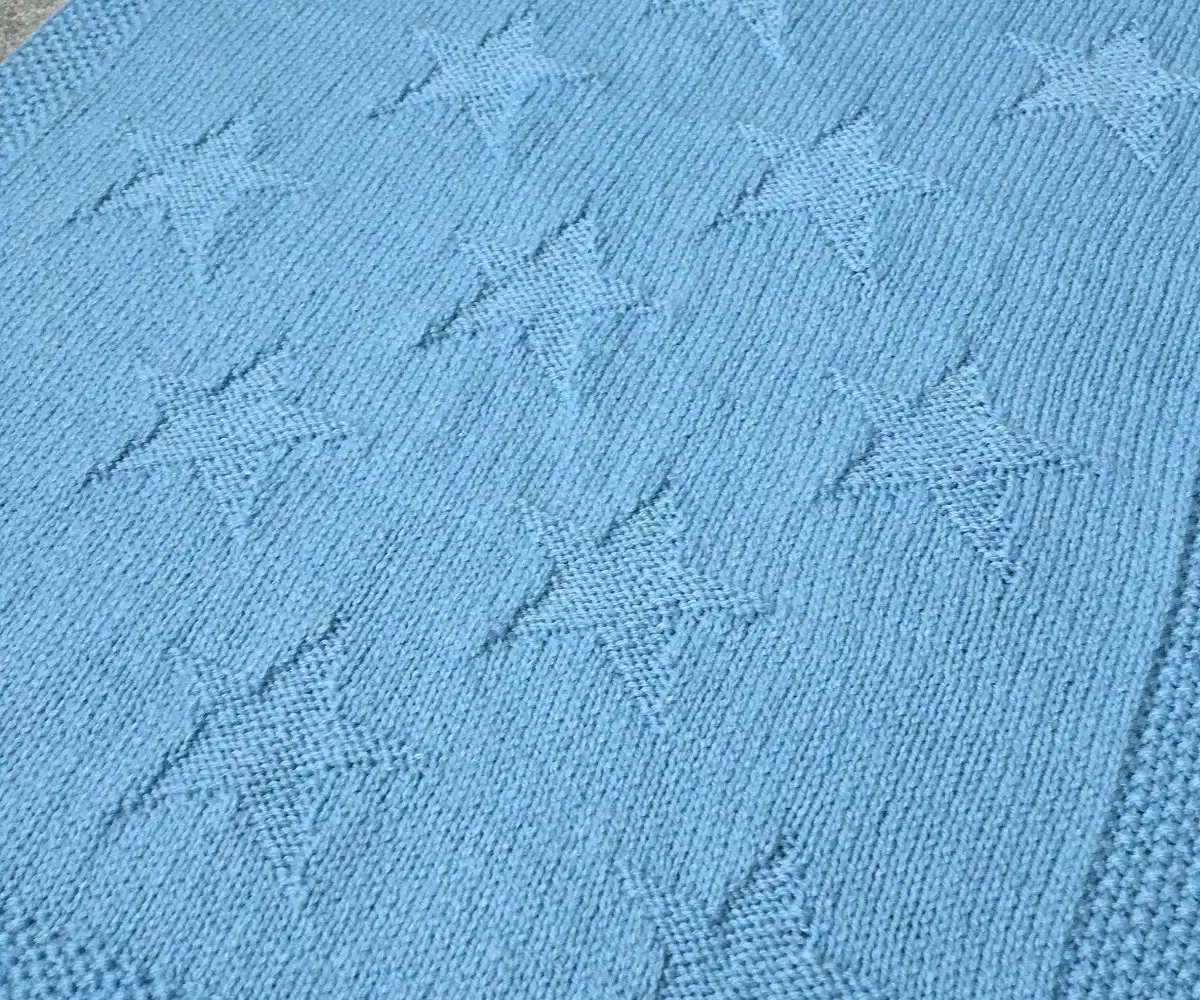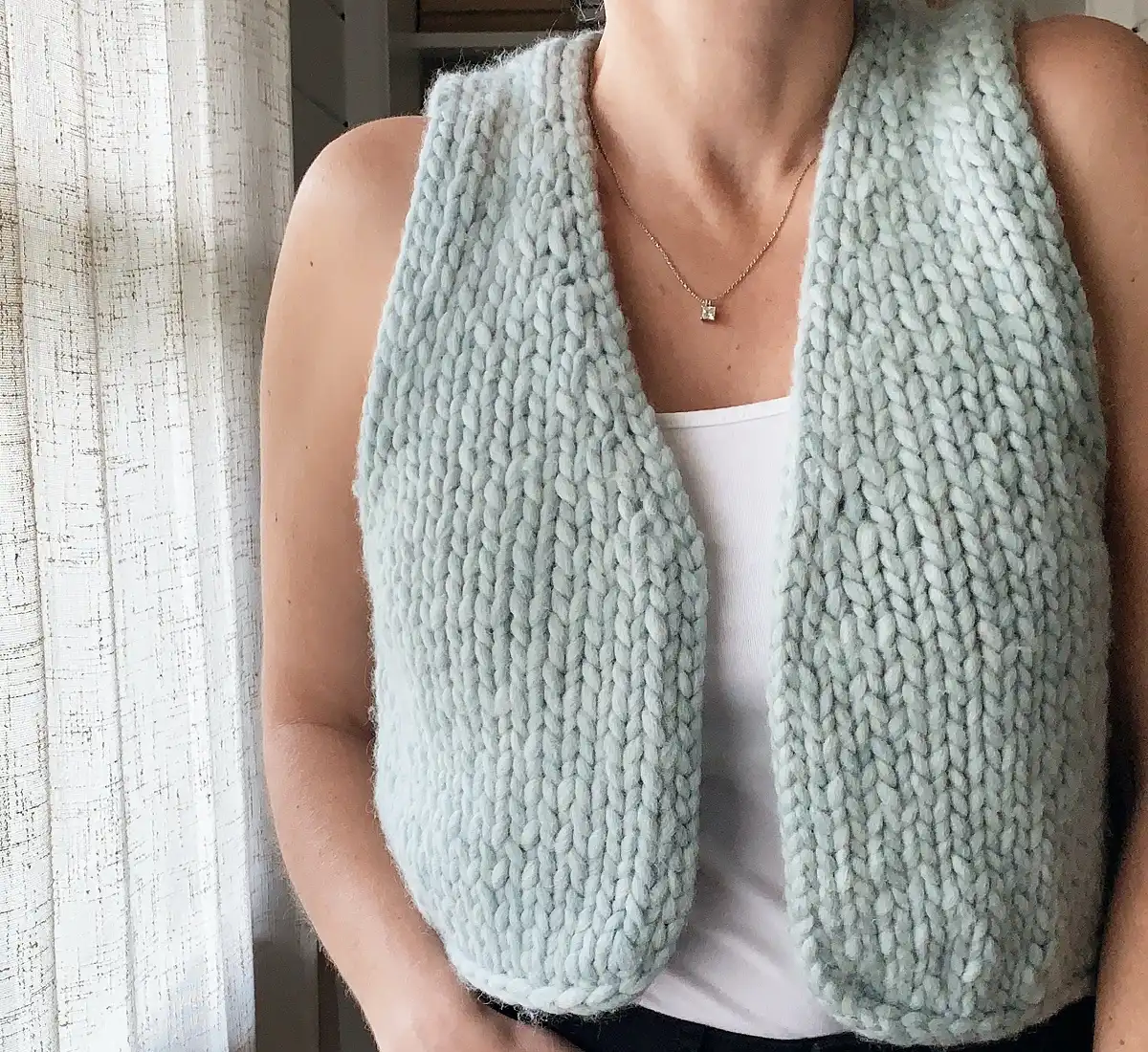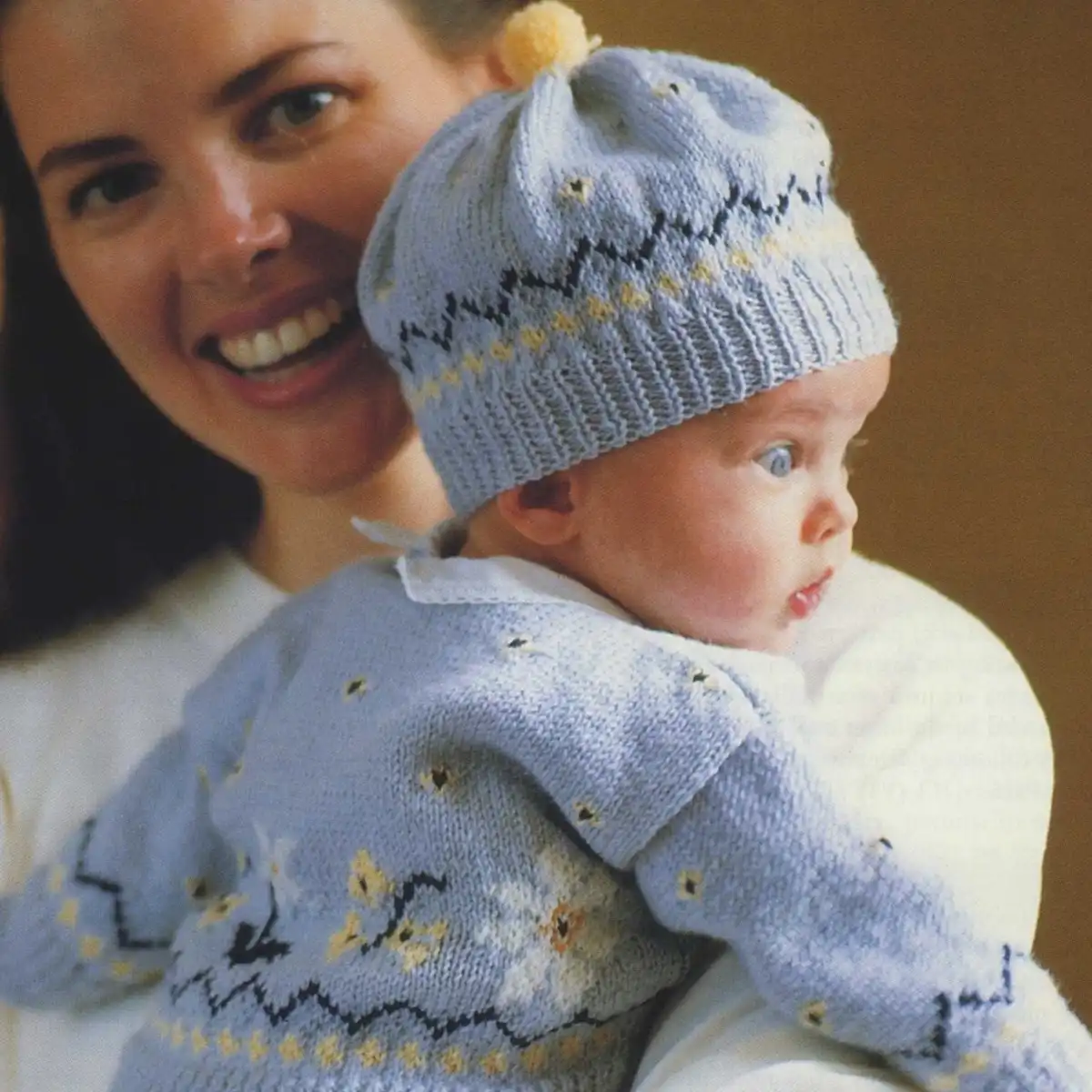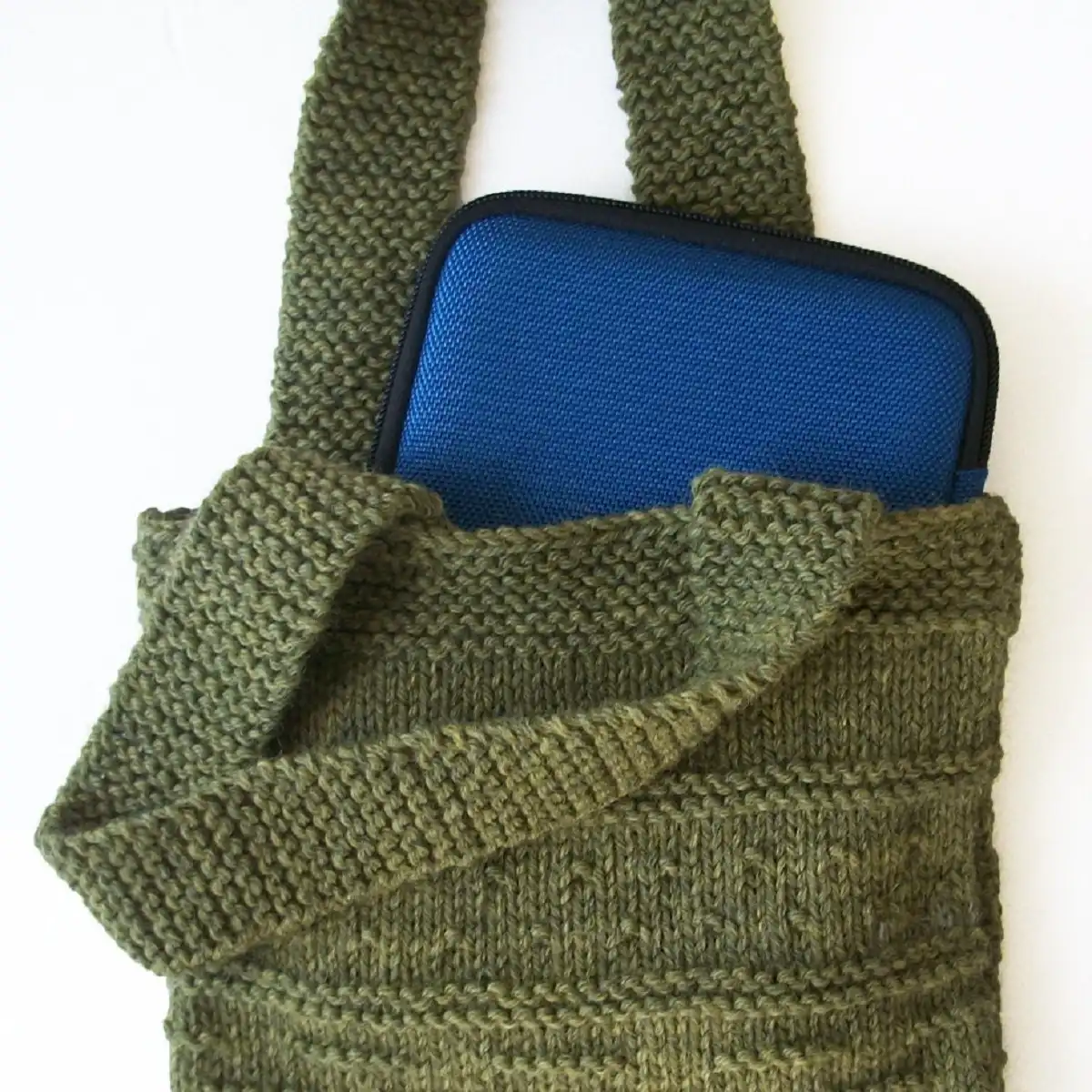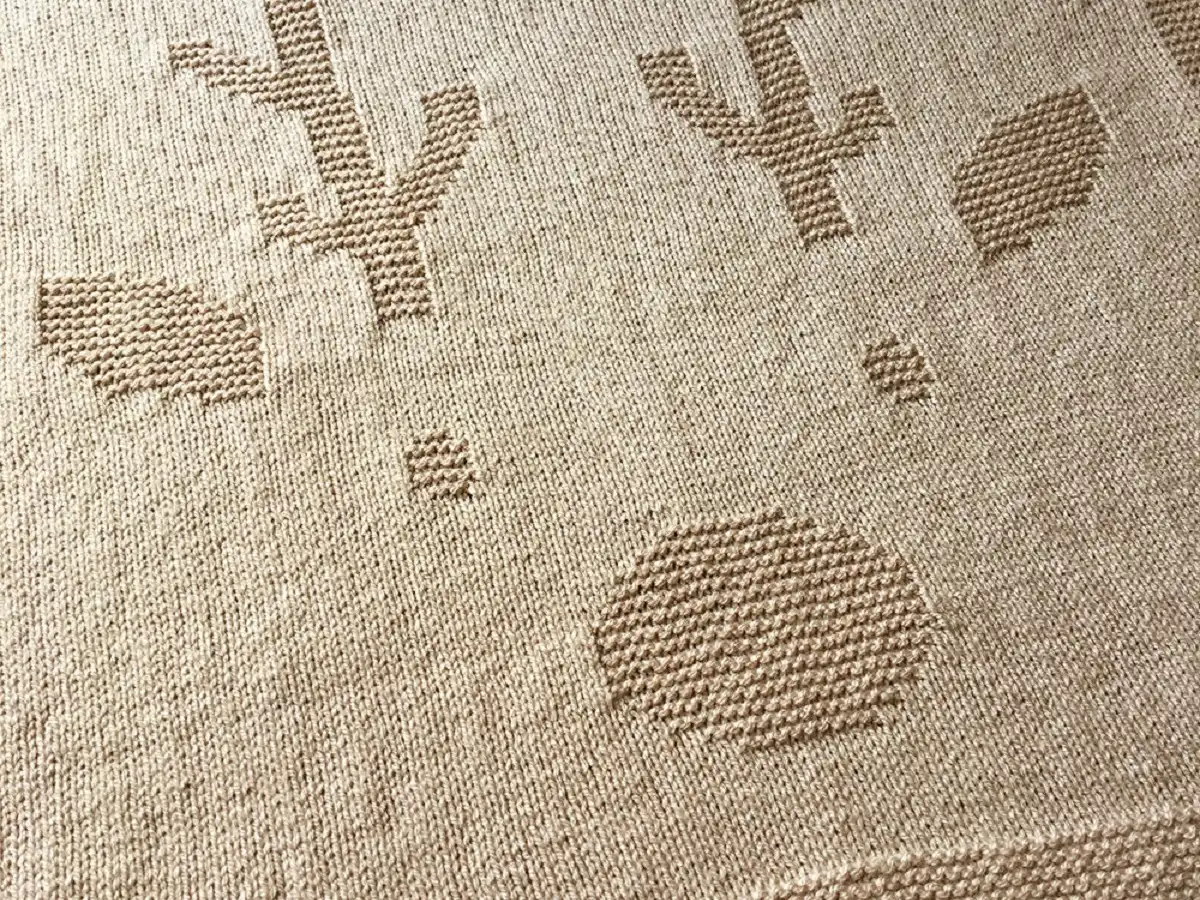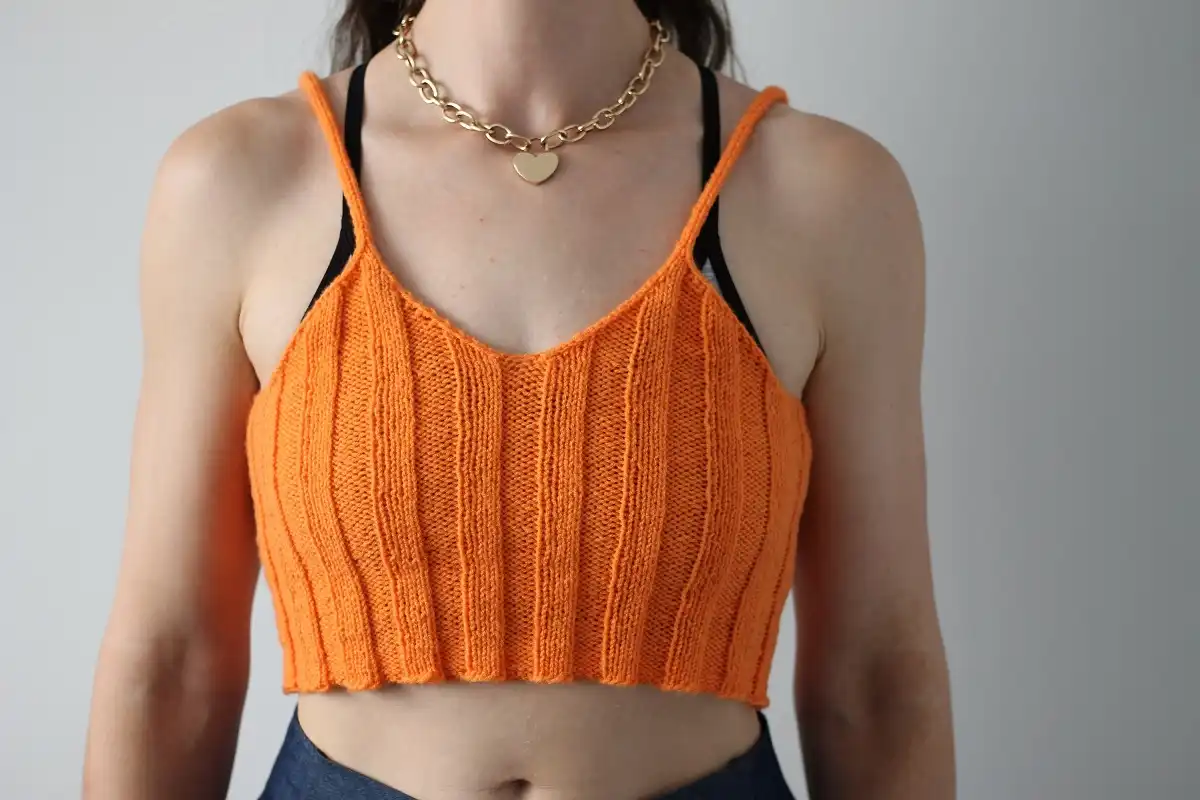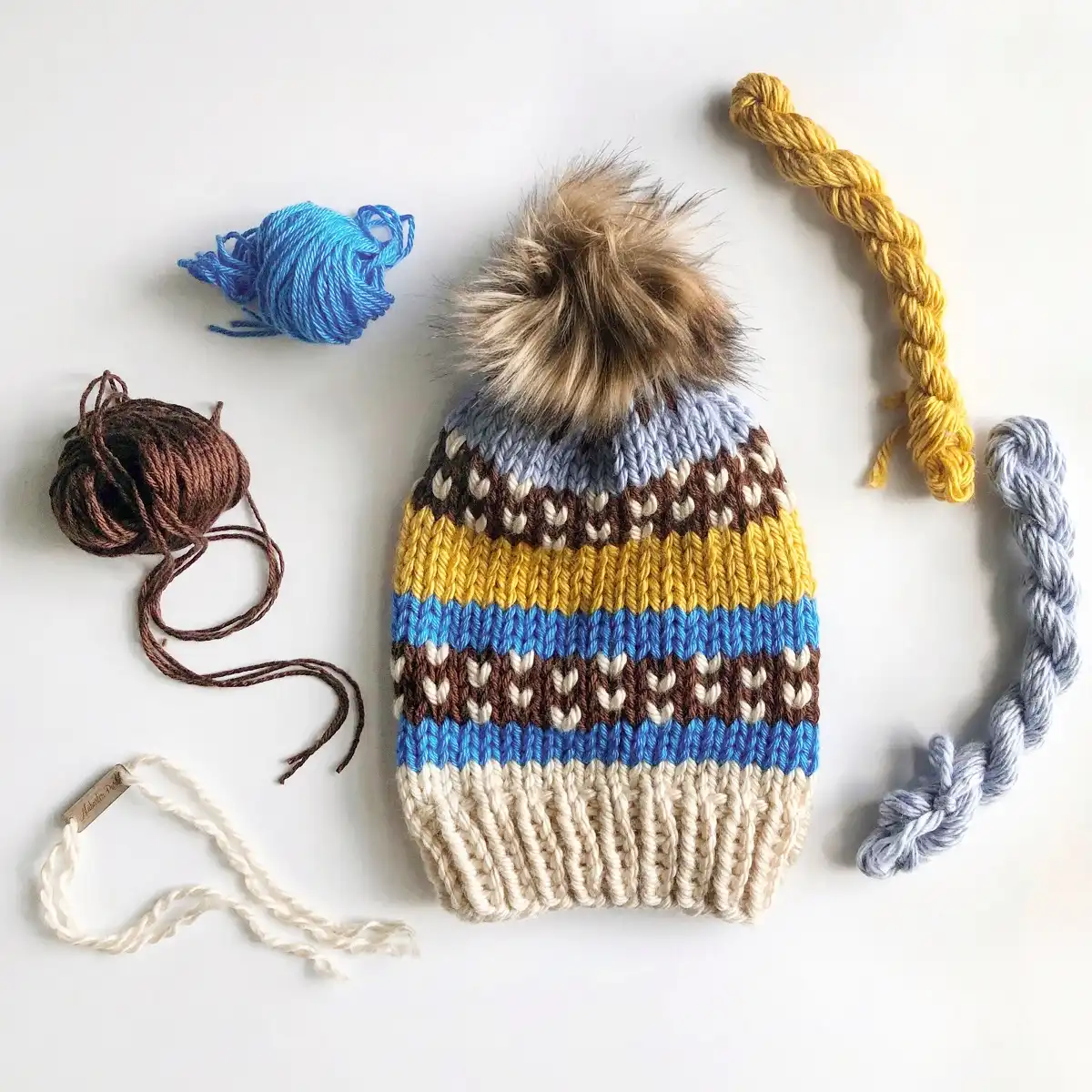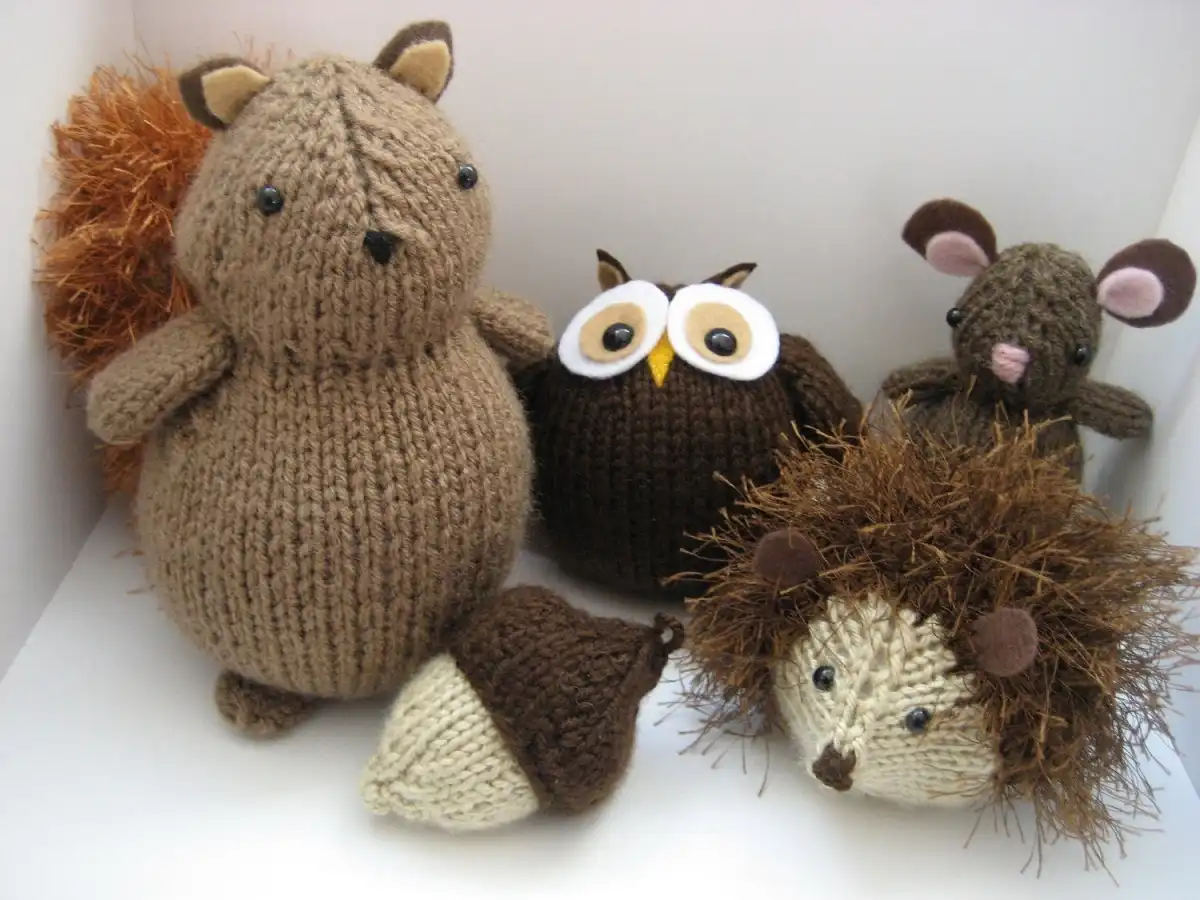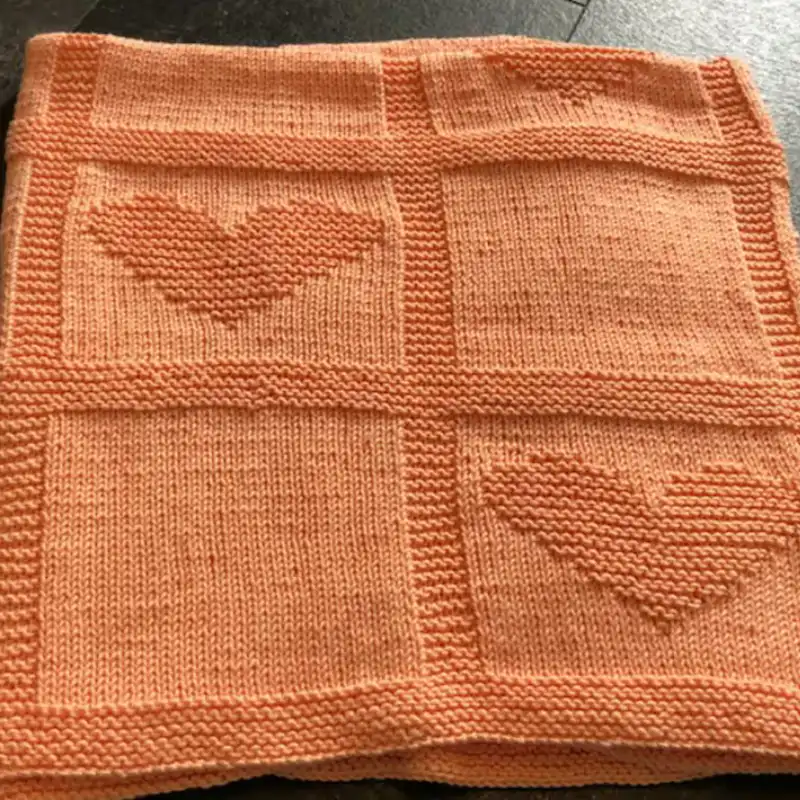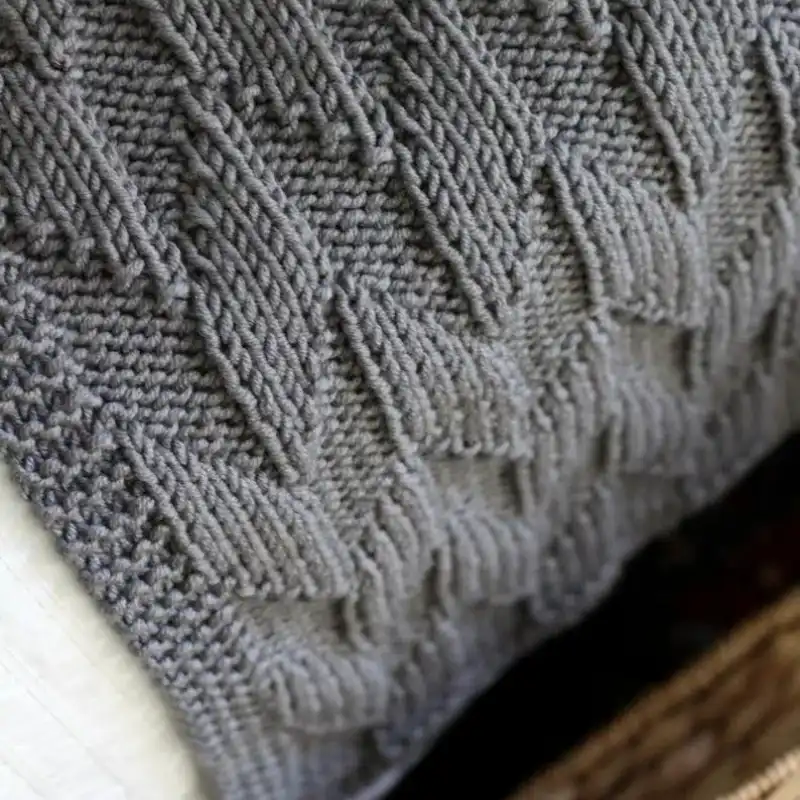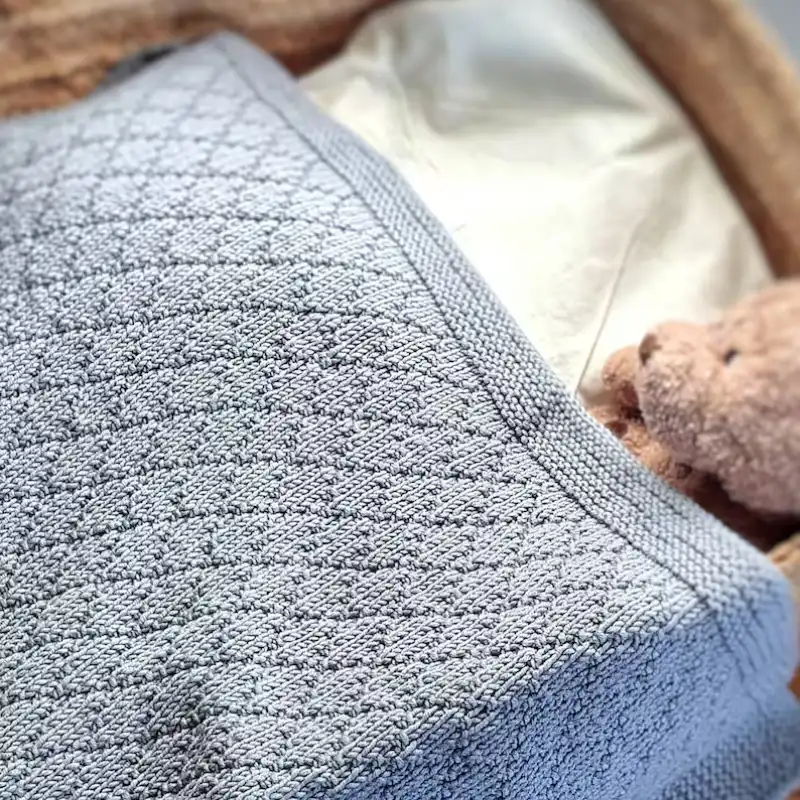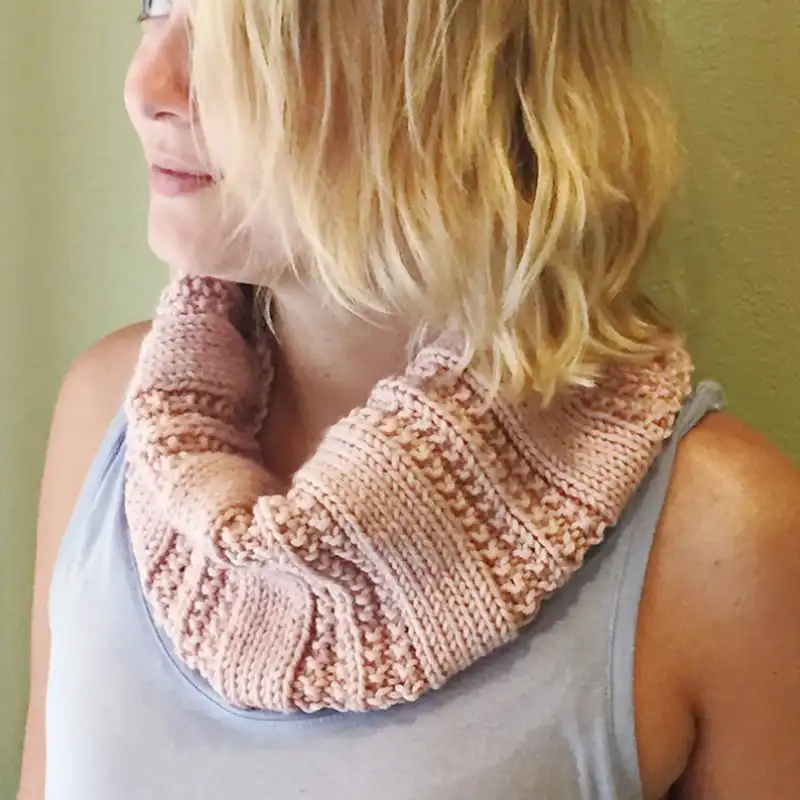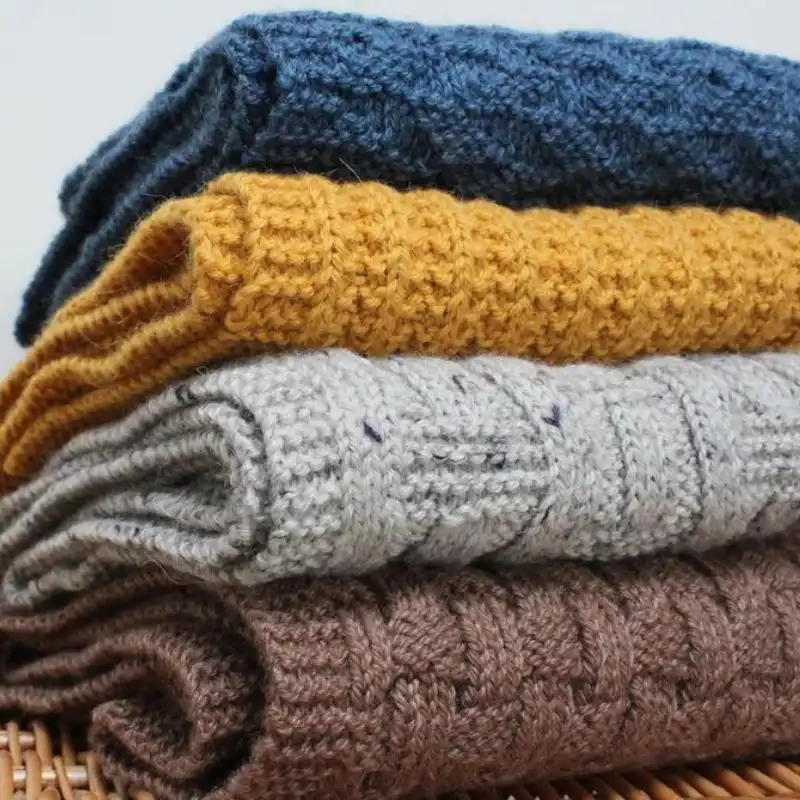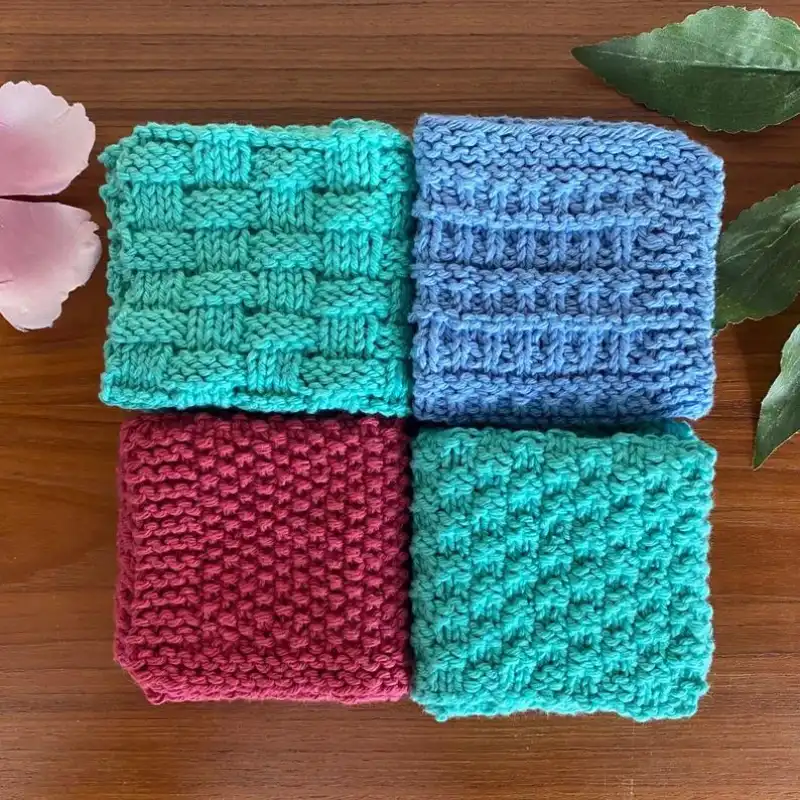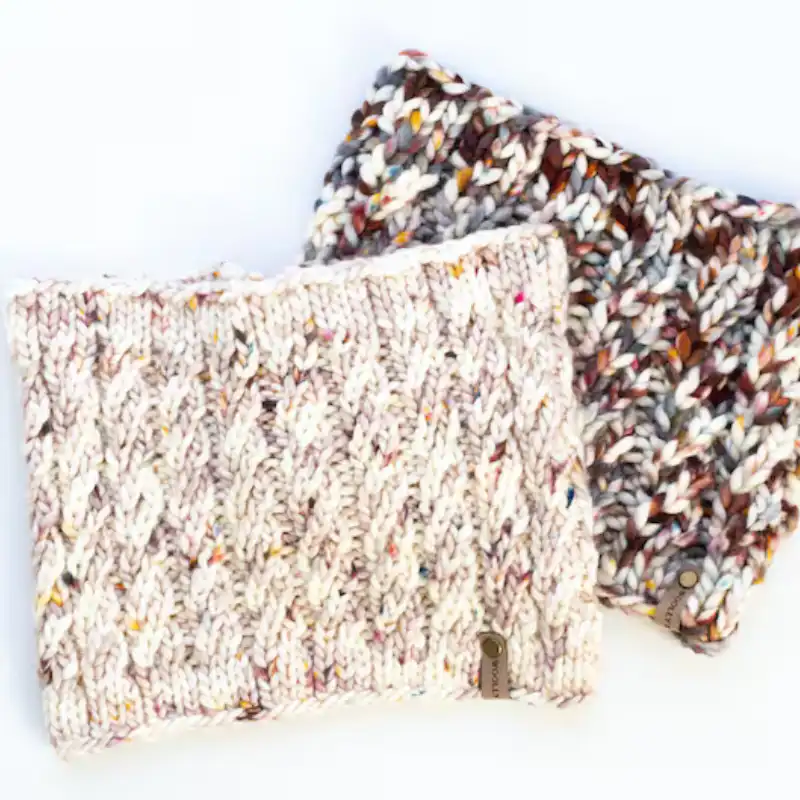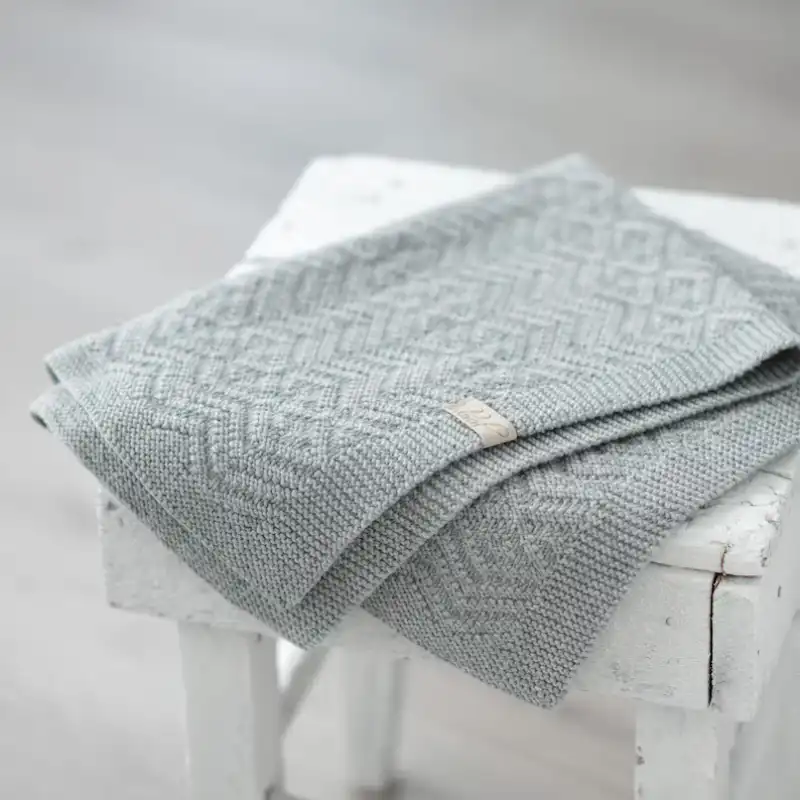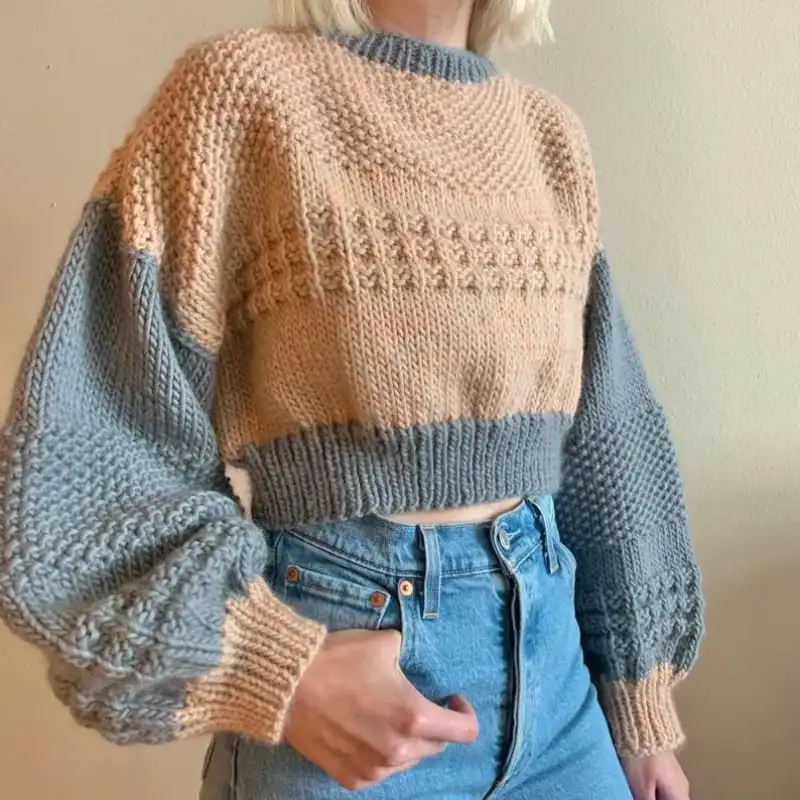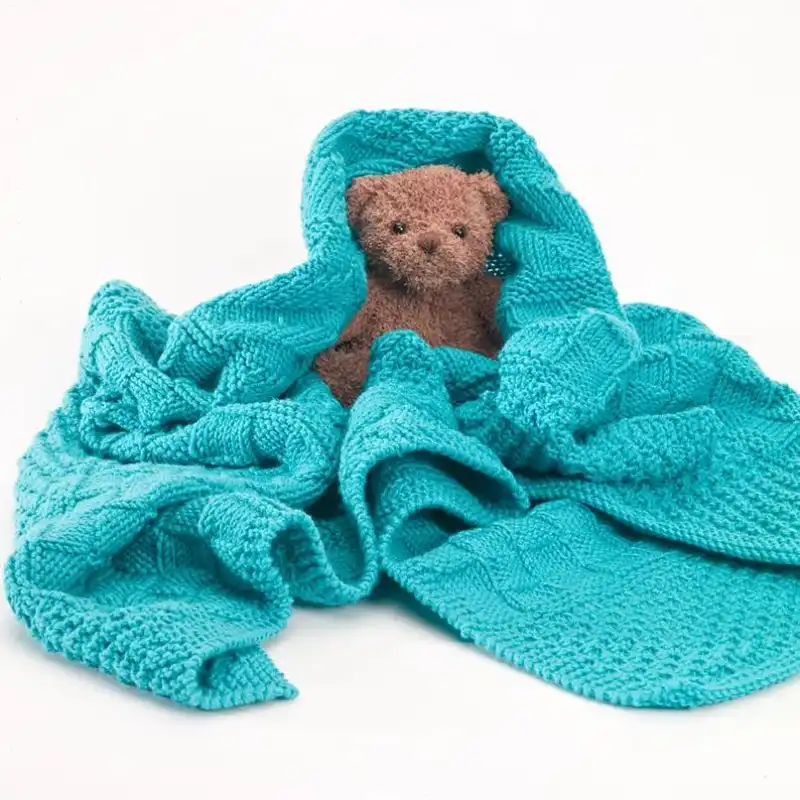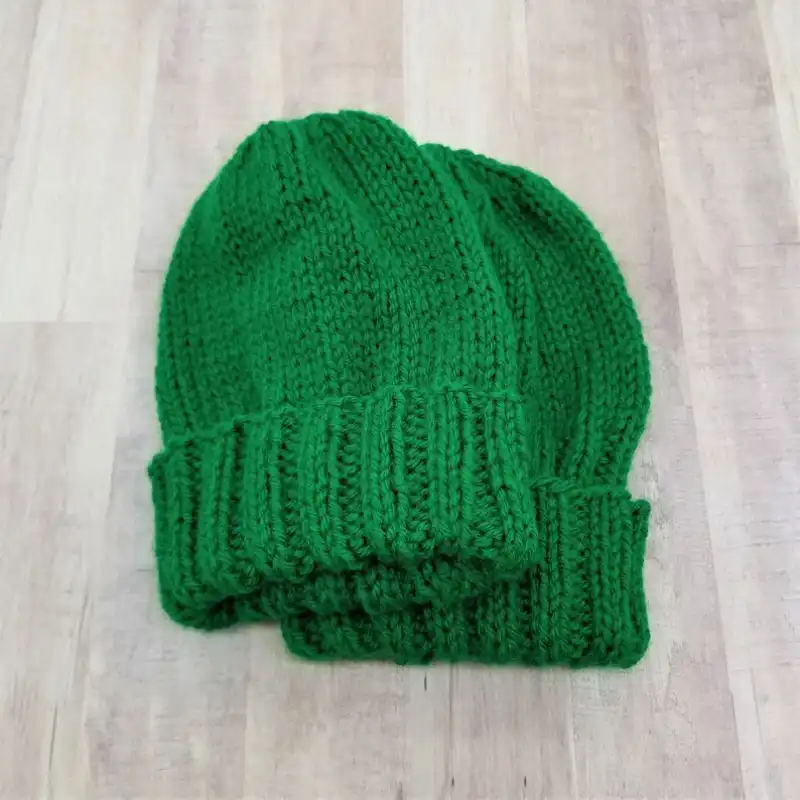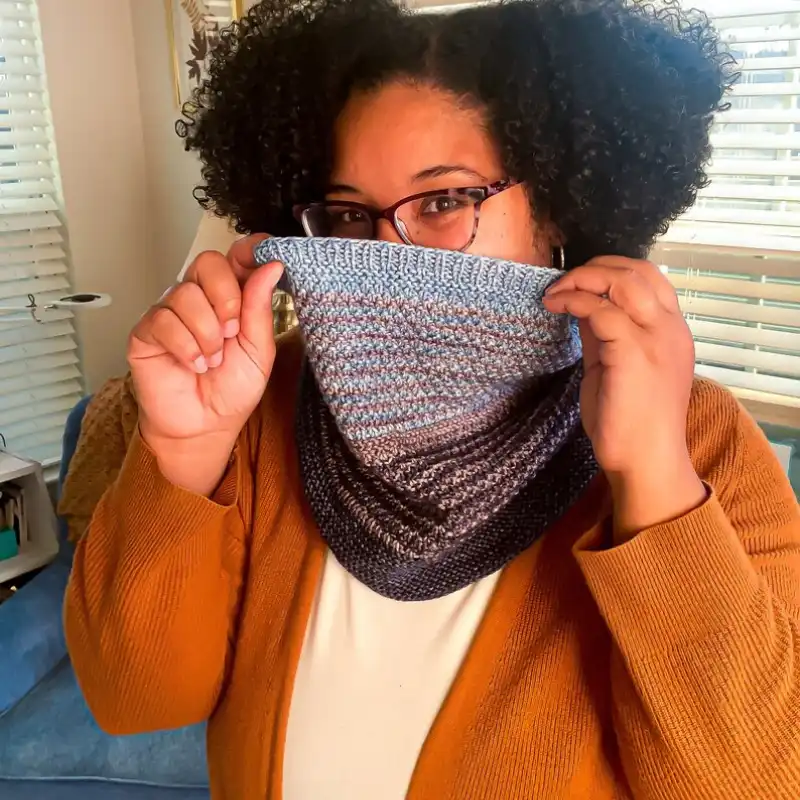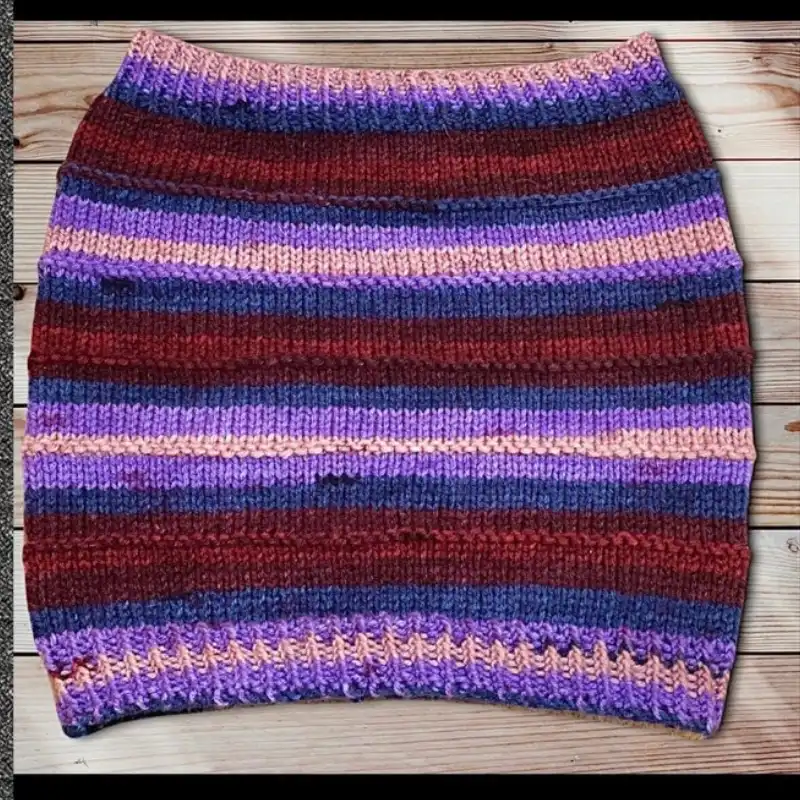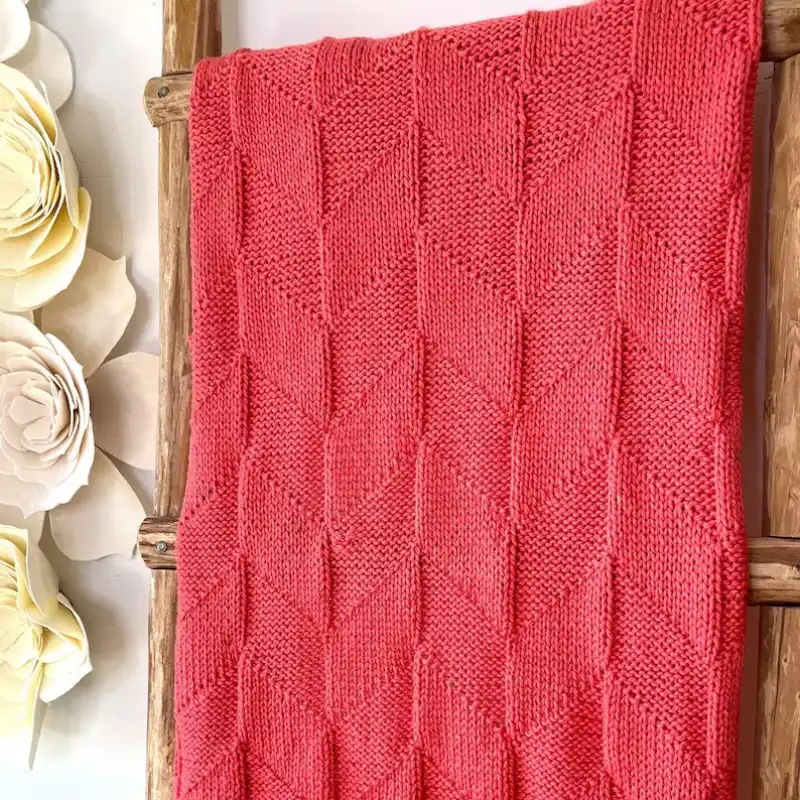Ever felt overwhelmed by intricate knitting patterns? I’ve been there, stitching and unstitching, searching for the best way to create beautiful designs without the headache. As an expert knitter, I’ve discovered one of the best solutions: 35 Amazing Knit and Purl Stitch Patterns. What is the most significant advantage of these patterns? They’re simple yet stunning.
Take action with one of the simplest methods available – knit and purl. The most significant advantages of these stitches are their versatility and ease. Whether a beginner or a seasoned pro, these top picks are your best bet for gorgeous creations.
The easiest way to elevate your knitting game is right at your fingertips. All you need are these patterns to transform yarn into masterpieces.They’re a great way to solve the common problem of repetitive, uninspiring designs.
Dive into this whimsical world of stitches where you’ll never find boredom, only endless possibilities. Ready to resolve your knitting dilemmas? Let’s stitch to spectacular with these most effective and engaging patterns!
Popularity & Versatility Of Knit And Purl Patterns
Knit and purl patterns, the fundamental stitches in knitting, enjoy immense popularity and versatility due to their simplicity and adaptability. These stitches form the backbone of countless patterns, allowing beginners and experts to craft diverse textures and designs. From elegant sweaters to cozy blankets, the possibilities are endless.
Their ease of learning makes them a go-to choice for anyone venturing into the knitting world. The intricate designs that can be achieved through various combinations of knit and purl stitches demonstrate their limitless potential, making them a cherished and essential skill in the knitting community.
Various Stitches For Knitting Except Knit And Purl
Here are several knitting stitches beyond the basic knit and purl, each with its unique characteristics:
- Stockinette Stitch: This is created by alternating rows of knit and purl stitches. It’s characterized by a smooth ‘V’ pattern on the front and a bumpy texture on the back, often used in sweaters and basic scarves.
- Garter Stitch: Made by knitting every row (when working flat), it produces a ridged, stretchy fabric that doesn’t curl at the edges, ideal for beginner projects like scarves and blankets.
- Rib Stitch: Involves alternating knit and purl stitches within the same row. It’s highly elastic and often used for cuffs and necklines.
- Moss Stitch: This checkerboard-like pattern is created by alternating knit and purl stitches across multiple rows. It results in a dense, textured fabric for scarves and pillows.
- Seed Stitch: Similar to the moss stitch but with a more random texture. It’s achieved by alternating knit and purl stitches and is known for its bumpy texture.
- Cable Stitch: A decorative stitch creates a twisted or braided appearance. It’s achieved by holding stitches on a cable needle and knitting them out of order. Cables add a three-dimensional texture to items like sweaters and hats.
- Lace Stitch: Involves creating patterns with intentional holes or gaps using yarn overs and decreases. Lace knitting is delicate and often used for shawls and summer tops.
- Slip Stitch: This involves slipping stitches from one needle to another without knitting them. It can create interesting textures and color patterns, especially in multi-color knitting.
- Brioche Stitch: A complex stitch creating a thick, ribbed fabric that’s very warm and springy. It involves a unique method of yarnovers and slipped stitches.
- Fair Isle (Stranded colorwork): A technique to create patterns with multiple colors. Stitches are knit with alternating colors, carrying the unused color along the back of the work.
Various Knit And Purl Knitting Patterns
Knit and purl stitches are the building blocks of knitting, and when combined in various ways, they can create a wide array of patterns. Here are some popular knit and purl patterns, each with its distinct texture and appearance:
- Stockinette Stitch: Alternating rows of knit stitches and purl stitches. The front (right side) has a smooth ‘V’ pattern, while the back (wrong side) is bumpy.
- Garter Stitch: Knitting every row (in flat knitting) or purling every row (in the round). It creates a fabric with a bumpy texture on both sides and is one of the easiest patterns.
- Ribbing Patterns: Alternating knit and purl stitches within the same row. Common variations include 1×1 rib (k1, p1) and 2×2 rib (k2, p2). Ribbing is stretchy and often used for cuffs and edges.
- Moss Stitch and Seed Stitch: Both involve alternating knit and purl stitches across rows, but the alignment differs. In moss stitch, you alternate every two rows, while in seed stitch, you alternate every row. It creates a textured, dotted fabric.
- Basketweave Pattern: This mimics the weave of a basket. Knit and purl stitches are arranged in blocks to create a checkerboard texture.
- Checkerboard Pattern: Similar to the basketweave but usually with smaller squares, alternating between knit and purl.
- Double Seed Stitch: It’s a variation of the seed stitch with a two-stitch, two-row repeat. It creates a more pronounced texture than the standard seed stitch.
- Herringbone Stitch: Although more complex, this stitch creates a distinctive zig-zag pattern that resembles the bones of a herring fish.
- Waffle Stitch: This pattern creates a textured fabric that looks like a waffle. It combines knit and purl stitches that form a square pattern.
- Broken Rib Pattern: A variation of ribbing where rows of straight knit stitches interrupt the rib pattern, creating a textured yet stretchy fabric.
Essential Tools And Materials
- Yarn: The type of yarn you choose depends on your project. Yarns come in various weights (thicknesses) and fibers (wool, cotton, acrylic, etc.). For beginners, a medium-weight yarn like worsted or aran is often recommended.
- Knitting Needles: Available in different sizes and materials (wood, metal, plastic). The size of the needles should match the weight of your yarn (the yarn label usually suggests a needle size).
- Stitch Markers: Useful for marking specific points in your pattern, like the beginning of a round or where to make a particular stitch.
- Row Counter: Helps keep track of what row you’re on in your pattern.
- Measuring Tape: Essential for measuring your work, especially if you’re creating a garment or any item where size is essential.
- Scissors: A small pair of scissors is necessary for cutting your yarn.
- Tapestry Needle: A blunt needle with a large eye used for weaving in ends of yarn when your project is complete.
- Stitch Holders: These are handy for holding stitches when not working on them, particularly in larger projects or making shapes.
- Knitting Gauge Checker: This tool helps you measure your stitch and row gauge, which is essential for ensuring that your finished project is the correct size.
- Knitting Pattern or Instructions: Whether it’s a book, a PDF, or an online tutorial, you’ll need some form of instructions to follow for your knit and purl designs.
- Blocking Tools: For some projects, you’ll need blocking mats and pins to shape and set your finished piece.
- Yarn Swift and Ball Winder: These tools help wind the yarn into balls if you buy yarn in hanks.
e You’ll need some essential tools and materials to start knitting designs using knit and purl stitches. Here’s a list of what you should have:
Glossary Of Knit And Purl Stitches
Here’s a standard glossary of terms related to knit and purl stitches, which are essential for understanding knitting patterns and instructions:
- Knit (K): A basic stitch that results in a V-shape on the right side of the fabric.
- Purl (P): The opposite of a knit stitch, creating a bump on the right side of the fabric.
- Stockinette Stitch (St St): A fabric created by knitting one row and purling the next. It has a smooth side (knit) and a bumpy side (purl).
- Garter Stitch: A fabric made by knitting every row (in flat knitting), producing a ridged, stretchy fabric.
- Ribbing: A pattern of alternating knit and purl stitches often used for cuffs and bands, it’s stretchy and can stand up or lay flat.
- Seed Stitch: A pattern where knit and purl stitches alternate, creating a textured, bumpy fabric.
- Moss Stitch: Similar to seed stitch but with a larger pattern repeat, creating a more pronounced texture.
- Right Side (RS): The side of the fabric is intended to be the outer or visible side when the item is worn or used.
- Wrong Side (WS): The side of the fabric that faces inward or is not meant to be seen in the finished project.
- Yarn Over (YO): An increase that involves wrapping the yarn around the needle, creating a hole in the fabric, often used in lace patterns.
- Slip Stitch (Sl): Transferring a stitch from one needle to the other without knitting it, often used in colorwork or to create texture.
- Decrease (Dec): Techniques used to reduce the number of stitches; standard methods include knit two together (K2tog) and slip, slip, knit (SSK).
- Increase (Inc): Techniques to add more stitches, such as making one (M1) or knitting front and back (KFB).
- Bind Off (BO): Securely closing off the stitches at the end of a project so they don’t unravel.
- Cast On (CO): Creating the initial row of stitches on the needle.
- Tension/Gauge: The number of stitches and rows per inch or centimeter is crucial for ensuring that the finished piece is the correct size.
- Blocking: The wetting or steaming finished knit pieces to set shape and size.
- Cable Stitch (C): A decorative stitch that creates a twisted or braided texture by rearranging the order of stitches.
- Stitch Marker: A tool used to mark a specific place in a row or round, helpful in complex patterns.
- Row Counter: A device used to keep track of the number of rows knitted.
- Pattern Repeat: The number of stitches and rows that make up one complete pattern design set.
- Turn the Work: The act of flipping the knitting so that the other side faces you, used in flat knitting.
- Circular Needles: Needles connected by a cable, used for knitting in the round or for large flat projects.
- Double Pointed Needles (DPNs): Needles with points on both ends, used for knitting small circular items like socks or sleeves.
- Gauge Swatch: A sample piece knitted in the pattern to check the gauge before starting the project.
- K2tog (Knit Two Together): A standard decrease method where two stitches are knitted together.
- SSK (Slip, Slip, Knit): Another decrease technique where two stitches are slipped and knitted together.
- Lifeline: A piece of waste yarn threaded through stitches of a row to save progress in case of errors.
- Bobbles: A textured knob made by knitting multiple stitches into one and then decreasing, often used as a decorative element.
- Mattress Stitch: A method of seaming pieces together, creating an almost invisible join.
- Weaving in Ends: The process of hiding the loose yarn ends within the finished work for a neat appearance.
Understand Knitting Stitches And Techniques
As a seasoned knitter, I’ve learned that understanding knitting stitches and techniques starts with mastering the knit and purl stitches. These form the foundation for most patterns. I recommend beginning with simple projects like scarves or dishcloths to practice. Paying attention to tension is crucial for even stitches.
Reading patterns come next, where abbreviations like K (knit), P (purl), and YO (yarn over) become familiar. I always suggest trying new techniques in small swatches before starting big projects. Patience and practice are essential. Remember, every expert knitter was once a beginner, so embrace each stitch as a learning step!
Which Yarn Is Best For Knit And Purl Knitting?
From my experience as a knitter, the best yarn for knit and purl stitches largely depends on your project and skill level. Here are some types I’ve worked with:
- Worsted Weight Yarn: This is my go-to, especially for beginners. It’s thick enough to handle easily and works quickly, making it great for practicing basic stitches.
- Cotton Yarn: I love using cotton for dishcloths and summer wear. It’s sturdy, washable, and holds its shape well, but it can be stiff, so it’s not always the best for garments needing drape.
- Merino Wool: This is my favorite for clothing. It’s soft, warm, and has a lovely stretch. Merino wool is excellent for knit and purl stitches, giving a nice definition to the pattern.
- Acrylic Yarn: An excellent budget-friendly option. It’s versatile and comes in a wide range of colors. While it’s great for toys and blankets, it doesn’t breathe like natural fibers.
- Alpaca Yarn: Softer and warmer than wool, alpaca is luxurious and extraordinary for cozy accessories. It can be a bit slippery to knit with, so I’d recommend it for those with more experience.
- Silk Yarn: I use silk for special projects. It has a beautiful sheen and drape, perfect for elegant shawls or tops. However, it’s pricey and can be challenging to work with.
- Chunky/Bulky Yarn: Ideal for quick projects like hats or scarves. It knits quickly and is easy to handle, though the stitches can be less defined.
- Superwash Wool: This wool has been treated to be machine washable. It’s practical for baby items or gifts where easy care is essential.
Do Knit And Purl Knitting Take More Yarn Than Usual?
Whether a project uses more yarn in knitting depends not just on the stitches used (like knit and purl) but also on the pattern’s complexity, the yarn’s thickness, and the desired fabric density. Generally, basic knit and purl stitches, such as in stockinette or garter stitch, reduce yarn usage compared to other more complex stitches. However, certain factors can influence yarn consumption:
- Stitch Pattern: Some textured patterns, which involve more complex combinations of knit and purl stitches, can consume more yarn due to their three-dimensional nature.
- Tension: Tighter tension can use slightly less yarn, while looser knitting might use more. But this is often a minimal difference and should not override the importance of maintaining consistent tension for even fabric.
- Fabric Density: A denser fabric that uses smaller needles or thicker yarn for a tighter weave may use more yarn.
RELATED: 25 Easy-To-Follow Knitting Patterns For Beginners (With Pictures)
Is Knit And Purl Stitch Beginner Friendly?
Absolutely! From my experience, the knit and purl stitches are incredibly beginner-friendly. They are the foundational knitting stitches and are usually the first techniques taught to novices. Learning these two basic stitches opens the door to many patterns and textures, yet they’re simple enough to master with some practice.
Most beginner projects, like scarves and dishcloths, primarily use these stitches. They provide a perfect balance of ease and versatility, allowing beginners to see progress and gain confidence quickly. Once you get the hang of knit and purl, the knitting world becomes wonderfully accessible.
Advantages & Techniques For Knit And Purl Knitting
Advantages of Knit and Purl Knitting
- Versatility: Combining knit and purl stitches can create a vast array of textures and patterns, from simple to intricate.
- Suitable for Beginners: These are the fundamental stitches in knitting, making them ideal for beginners to learn and practice.
- Flexibility in Design: From basic scarves to complex sweaters, knit, and purl stitches are the basis for numerous knitting projects.
- Texture Creation: By alternating knit and purl stitches, you can create exciting textures like ribbing, moss stitch, or basketweave.
- Foundation for Advanced Techniques: Mastery of knit and purl stitches is essential before moving on to more advanced knitting techniques.
- Therapeutic and Relaxing: The rhythmic nature of knitting these stitches can be calming and meditative.
Techniques in Knit and Purl Knitting
- Stockinette Stitch: Alternating rows of knit and purl stitches, creating a fabric with a smooth side and a bumpy side.
- Garter Stitch: Knitting every row (or purling every row) for a fabric with a bumpy texture on both sides.
- Ribbing: Alternating knit and purl stitches within the same row, commonly used for edges of garments as it’s stretchy.
- Moss and Seed Stitches: Creating a textured, bumpy fabric by alternating knit and purl stitches in various sequences.
- Basketweave Pattern: A combination of blocks of knit and purl stitches to mimic the look of woven baskets.
- Slip Stitch Knitting involves slipping some stitches without knitting them, creating interesting textures and color patterns.
- Knitting in the Round: Using circular or double-pointed needles to create fabric tubes, often with knit and purl stitches.
- Increasing and Decreasing: Techniques to add or reduce stitches in a pattern, often used with knit and purl stitches for shaping.
- Cabling: A technique that involves crossing one group of stitches over another, often using a cable needle.
- Lace Knitting: Creating patterns with deliberate holes, using yarn overs in conjunction with knit and purl stitches.
How Do You Cast On For Knit And Purl Knitting, And How Many Stitches?
Casting on is the first step in any knitting project, setting the foundation for knit and purl stitches. Here’s a simple way to cast on, commonly used by knitters:
Long-Tail Cast-On Method
Estimate Yarn Length: First, estimate the length of yarn you’ll need for your cast-on. A general rule is to allow for about 1 inch of yarn for each stitch for a medium-weight yarn. For example, if you need 20 stitches, leave a 20-inch tail.
Create a Slip Knot: Make a slip knot on your needle about your estimated length from the end of the yarn. It counts as your first stitch.
Position Your Hands: Hold the needle with the slip knot in your right hand. With your left hand, grasp the two strands of yarn (the tail and the yarn connected to the ball) in a way that resembles a slingshot.
Casting On: With your left hand, pick up the yarn strand attached to the ball with your index finger and the tail with your thumb. Twist your hand slightly so the yarns cross.
Making Stitches: Insert the needle under the strand on your thumb, then over and under the strand on your finger, and finally, bring it back through the loop on your thumb.
Securing the Stitch: Let go of the loop on your thumb and pull the yarn to tighten the stitch on the needle. Repeat these steps until you have the desired number of stitches.
How Many Stitches to Cast On: The number of stitches to cast on depends on your project:
- For a scarf, a typical beginner project, you might cast on between 20 to 40 stitches depending on the yarn weight and desired width.
- For a dishcloth, 30 to 45 stitches are common.
- For larger projects like blankets or garments, you’ll need to refer to a pattern that specifies the number based on the intended size and gauge.
How Do You Knit Knit And Purl Socks?
Skill Level: Intermediate (due to shaping and working in the round)
Materials
- Fingering or sock-weight yarn, about 400 yards.
- Set of 5 double-pointed needles (DPNs), size US 1 or 2 (2.25mm or 2.75mm) or size needed to get gauge.
- Stitch markers.
- Tapestry needle for weaving in ends.
Gauge: About 8 to 10 stitches per inch. It’s important to knit a gauge swatch to ensure proper sizing.
Instructions
1. Cuff
- Cast on 64 stitches (or the number required by your gauge) using the long-tail method.
- Distribute stitches evenly on 4 DPNs (16 stitches per needle).
- Join in the round, being careful not to twist stitches. Place a marker for the beginning of the round.
- Knit in a 2×2 rib (K2, P2) for about 1.5 to 2 inches.
2. Leg
- Continue knitting in the round, but switch to stockinette stitch (knit all stitches).
- Knit until the leg measures 6 to 8 inches from the cast-on edge or your desired length.
3. Heel Flap
- Work back and forth on half the stitches (32 stitches) for the heel flap, leaving the other half on hold.
- Start with a wrong side row, purl across.
- Turn the work, *Sl1, K1; repeat from * to end.
- Repeat these two rows for about 2 inches.
4. Turning the Heel
- Work short rows to shape the heel. This part can be tricky for beginners, so following a specific pattern or tutorial for the heel turn is advised.
5. Gusset
- Pick up and knit stitches along the edge of the heel flap, knit across the held stitches, and then pick up and knit stitches along the other side of the flap.
- Decrease at both sides of the gusset every other round until you’re back to 64 stitches.
6. Foot
- Continue knitting in stockinette stitch in the round until the foot length is about 2 inches less than your total desired foot length.
7. Toe
- Decrease evenly around the toe until about half of the stitches remain.
- Graft the toe stitches together using the Kitchener stitch.
8. Finishing
- Weave in all loose ends.
- Block the socks if desired.
35 Knit And Purl Stitch Patterns
1. Panda Baby Blanket
How sweet is this pattern? The smiling pandas are perfect for a baby’s first blanket. This blanket is a beloved family heirloom in waiting!
However, we don’t advise trying this pattern as a beginner because you must closely follow the design to avoid getting a wonky blanket. So, if you’re an intermediate knitter, this is an excellent option.
Suggested Yarn: Worsted Yarn
Difficulty Level: Beginner
Yarn Weight: Worsted
Knitting Needle Size:5.0 mm (US 8)
2. Stars Baby Blanket
With this baby blanket, you can genuinely let your child drift off under the magical stars! You need 4mm needles and 150 grams of DK yarn to make it. When finished, the blanket is between 21 and 23 inches and ready to be tucked into any crib.
The design uses knit and purl stitches, giving it a minimal look. Like most patterns, as long as you keep the wool type the same as is recommended, you can choose your color!
Suggested Yarn: DK Yarn
Difficulty Level: Intermediate
Yarn Weight: DK (3)
Knitting Needle Size: 4.0 mm (US 6)
3. Maker Vest
For a bohemian look, we love this open vest pattern. The chunky vest is ideal for layering and will fit snugly under many winter coats. In addition, the combined knit and purl stitches, otherwise known as stockinette stitch, make it delightfully minimal.
This pattern proves that vests don’t have to be ugly; you can even knit a flattering one yourself!
Difficulty Level: Intermediate
Yarn Weight: Bulky
Knitting Needle Size: 9.0 mm (US 13)
4. Fair Isle Cardigan and Hat for Babies
If you love classic baby knitwear and want to pass down a handmade clothing tradition, this jumper and hat combination is for you. The fair isle design can be made for 0-3 and 3-6 months old babies, who will look extra cute in these outfits.
The natural pattern is ideal for country-loving family members, and the gathered hat will stretch with your growing baby. The pom pom on top is almost too adorable to handle!
Suggested Yarn: Fingering Yarn
Difficulty Level: Intermediate
Yarn Weight: Fingering (1)
Knitting Needle Size: 3.0 mm (US 2.5)
5. Knit And Purl Bag
For the environmentally conscious, reusing bags is essential. So why not make your own to carry anything from groceries to shopping or a laptop for far longer than a plastic bag will last? It’ll look much nicer, too!
Suggested Yarn: Aran Yarn
Difficulty Level: Beginner
Yarn Weight: Aran
Knitting Needle Size: 5.5 mm (US 9)
6. Reindeer Baby Blanket
Want to get your excited children off to bed before Santa comes? This reindeer blanket is a great way to bring the festive cheer into kids’ bedrooms, and hopefully, they’ll fall asleep while they’re there!
The pom-pom nose is extra cute; it’s lovely and fluffy, perfect for children to hold onto for comfort in the night.
Suggested Yarn: Chunky Yarn
Difficulty Level: Intermediate
Yarn Weight: Chunky
Knitting Needle Size: 6.0 mm (US 10)
7. Easy Ribbed Vest
Heading to a festival soon? This retro-style ribbed vest gives off those summer free-spirited vibes that are perfect for letting your hair down.
The ribbed design is much more likely to stay in place than an unribbed one, even when dancing your heart out!
Suggested Yarn: Worsted Yarn
Difficulty Level: Beginner
Yarn Weight: Worsted
Knitting Needle Size: 5.0 mm (US 8)
8. Slouchy Beanie
This ‘Happy Scrappy Hat’ will brighten your lap if you’re looking for a colorful make. The fun multi-colored pom-pom reminds us of sprinkles, which will liven up even the greyest days.
Suggested Yarn: Bulky Yarn
Difficulty Level: Beginner
Yarn Weight: Bulky
Knitting Needle Size: 6.5 mm (US 10.5)
9. “Vienna” Socks
Arguably prone to getting cold, your feet need extra attention in winter! These socks do just that; their stripy design lets you get creative with your color palette. And when you’ve finished knitting, you can immediately put the socks on and admire them!
We advise only attempting this one if you’re at least an intermediate knitter, as the pattern requires some stitching know-how. If you want a challenge, though, these can make a great gift to donate to charity or give to people without homes.
Suggested Yarn: Fingering Yarn
Difficulty Level: Intermediate
Yarn Weight: Fingering (1)
Knitting Needle Size: 2.25 mm (US 1)
10. Amigurumi Knit Woodland Animals
If you’re looking for a challenge and crafting cute animals simultaneously, this pattern set is ideal. The pack includes instructions for a squirrel, acorn, hedgehog, owl, and mouse. So you could have your little woodland in your home!
We recommend making these a meaningful gift for your children; they will surely treasure these handmade creatures. The pattern isn’t made for beginners because differently shaped parts require being put together.
Suggested Yarn: Sport Yarn
Difficulty Level: Intermediate
Yarn Weight: Sport
Knitting Needle Size: 3.5 mm (US 4)
11. Simple Hearts Knit Blanket
Fall in love with the art of knitting with the Simple Hearts Knit Blanket. This pattern combines the timeless knit and purl stitches to create a charming blanket adorned with sweetheart motifs. Perfect for all skill levels, this project is a delightful way to showcase your affection for knitting and cozy craftsmanship.
Suggested Yarn: Worsted Yarn
Difficulty Level: Intermediate
Yarn Weight: Worsted
Knitting Needle Size: 5.0 mm (US 8)
12. Together Again Reversible Afghan
Bring warmth and unity to your space with the Together Again Reversible Afghan. This knitting pattern, centered around knit and purl stitches, creates a cozy and reversible blanket. Explore the beauty of texture and simplicity as you knit your way to a versatile and comforting afghan.
Suggested Yarn: Bulky Yarn
Difficulty Level: Intermediate
Yarn Weight: Bulky
Knitting Needle Size:8.0 mm (US 11)
13. Colorful Knit & Purl scarf (with blanket)
Infuse your knitting projects with color using the Colorful Knit & Purl Scarf pattern. This versatile pattern guides you through creating a vibrant scarf with knit and purl stitches and includes instructions for a matching blanket. Dive into the world of color and texture with this delightful and rewarding project.
Suggested Yarn: Worsted Yarn
Difficulty Level: Intermediate
Yarn Weight: Worsted
Knitting Needle Size:5.0 mm (US 8)
14. Beginner-Friendly Baby Blanket
Embrace the joy of creating with the Beginner-Friendly Baby Blanket. This pattern, featuring simple knit and purl stitches, is perfect for those new to knitting. Craft a soft and snuggly blanket for the little ones in your life, and enjoy the satisfaction of making a cherished heirloom piece.
Suggested Yarn: Bulky Yarn
Difficulty Level: Beginner
Yarn Weight: Bulky
Knitting Needle Size:8.0 mm (US 11)
15. Easy Textured Knit Purl Cowl
Elevate your winter wardrobe with the Easy Textured Knit Purl Cowl. This pattern combines basic knit and purl stitches to create a stylish, textured cowl. Perfect for beginners, this project offers a fashionable accessory that showcases the beauty of simplicity in knitting.
Suggested Yarn: Aran Yarn
Difficulty Level: Beginner
Yarn Weight: Aran
Knitting Needle Size:5.5 mm (US 9)
16. Gnome Dishcloth
Add a touch of whimsy to your kitchen with the Gnome Dishcloth knitting pattern. This pattern guides you through creating a charming dishcloth featuring a playful gnome design Using knit and purl stitches. Make dishwashing a delightful experience with this cute and functional project.
Suggested Yarn: Worsted Yarn
Difficulty Level: Beginner
Yarn Weight: Worsted
Knitting Needle Size:4.0 mm (US 6)
17. Knit Purl Design Keyhole Scarf
Make a statement with the Knit Purl Design Keyhole Scarf. This pattern combines the versatility of the keyhole design with textured knit and purl stitches. Create a stylish accessory that blends functionality and fashion, perfect for staying cozy in colder weather.
Suggested Yarn: Fingering Yarn
Difficulty Level: Intermediate
Yarn Weight: Fingering (1)
Knitting Needle Size: 3.5 mm (US 4)
18. Big Scarf Beginner Scarf
Stay warm in style with the Big Scarf Beginner Scarf knitting pattern. Ideal for those new to knitting, this project features oversized dimensions and a combination of basic knit and purl stitches. Wrap yourself in comfort and fashion with this accessible and satisfying scarf project.
Suggested Yarn: Super Bulky Yarn
Difficulty Level: Beginner
Yarn Weight: Super Bulky
Knitting Needle Size:10.0 mm (US 15)
19. Easy To Make Knit & Purl Stitch Blanket
Enjoy the soothing rhythm of knit and purl stitches with the Easy-to-Make Knit & Purl Stitch Blanket. This pattern is designed for simplicity, allowing knitters of all levels to create a cozy, textured blanket. Experience the joy of crafting as you knit your way to warmth and comfort.
Suggested Yarn: Chunky Yarn
Difficulty Level: Beginner
Yarn Weight: Chunky
Knitting Needle Size:9.0 mm (US 13)
20. Dishcloth Beginner Pack
Upgrade your kitchen essentials with the Dishcloth Beginner Pack. This collection of dishcloth patterns focuses on basic knit and purl stitches, providing an excellent introduction to knitting for beginners. Create functional and stylish dishcloths to add a handmade touch to your daily routine.
Suggested Yarn: Worsted Yarn
Difficulty Level: Beginner
Yarn Weight: Worsted
Knitting Needle Size:4.0 mm (US 6)
21. Cool Hat And Cowl For Toddlers
Keep the little ones stylish and warm with the Cool Hat and Cowl for Toddlers knitting pattern. This project guides you through creating a trendy hat and cowl set designed specifically for toddlers, Using a combination of knit and purl stitches. Make dressing up fun and cozy with this adorable knitting endeavor.
Suggested Yarn: Bulky Yarn
Difficulty Level: Intermediate
Yarn Weight: Bulky
Knitting Needle Size:6.0 mm (US 10)
22. Spinnaker Cowl
Sail into the world of textured knitting with the Spinnaker Cowl. This pattern, featuring a captivating stitch pattern of knit and purl stitches, results in a stylish and cozy cowl. Elevate your winter wardrobe with this chic accessory that showcases the beauty of knit and purl techniques.
Suggested Yarn: DK Yarn
Difficulty Level: Intermediate
Yarn Weight: DK (3)
Knitting Needle Size: 4.0 mm (US 6)
23. Zig Zag Chevron Blanket
Add a touch of modern flair to your home with the Zig Zag Chevron Blanket. This knitting pattern combines the timeless appeal of chevron with the soothing rhythm of knit and purl stitches. Create a cozy and visually striking blanket that adds a stylish accent to any room.
Suggested Yarn: Aran Yarn
Difficulty Level: Intermediate
Yarn Weight: Aran
Knitting Needle Size:5.5 mm (US 9)
24. “Hazy Skies” Sweater
Wrap yourself in the comfort of a cloudy day with the “Hazy Skies” Sweater. This pattern blends knit and purl stitches, creating a stylish, cozy sweater. Embrace the laid-back elegance of hazy skies as you craft this wardrobe essential.
Suggested Yarn: Worsted Yarn
Difficulty Level: Intermediate
Yarn Weight: Worsted
Knitting Needle Size:5.0 mm (US 8)
25. Knit Purl Baby Blanket
Welcome the newest addition to the family with the Knit Purl Baby Blanket. This pattern, designed with simplicity, guides you through creating a soft and cuddly blanket using basic knit and purl stitches. Craft a timeless and cherished gift for the little ones in your life.
Suggested Yarn: Bulky Yarn
Difficulty Level: Beginner
Yarn Weight: Bulky
Knitting Needle Size:8.0 mm (US 11)
26. Rocking Horse Baby Blanket
Nurture warmth and nostalgia with the Rocking Horse Baby Blanket. This knitting pattern combines the sweetness of rocking horse motifs with the simplicity of knit and purl stitches. Create a charming and heirloom-quality blanket for the little dreamers in your life.
Suggested Yarn: Aran Yarn
Difficulty Level: Intermediate
Yarn Weight: Aran
Knitting Needle Size:5.5 mm (US 9)
27. Saint Patrick’s Day Hat
Celebrate the luck of the Irish with the Saint Patrick’s Day Hat. This festive knitting pattern incorporates classic knit and purl stitches to create a cozy hat adorned with St. Patrick’s Day-themed motifs. Showcase your holiday spirit with this delightful and wearable project.
Suggested Yarn: Worsted Yarn
Difficulty Level: Beginner
Yarn Weight: Worsted
Knitting Needle Size:4.0 mm (US 6)
28. Brood Cowl-In The Round
Stay snug and stylish with the Brood Cowl – In the Round. This knitting pattern, worked in the round, features a captivating combination of knit and purl stitches. Craft a versatile and chic cowl that adds a touch of texture to your winter wardrobe.
Suggested Yarn: Chunky Yarn
Difficulty Level: Intermediate
Yarn Weight: Chunky
Knitting Needle Size:8.0 mm (US 11)
29. Building Blocks And Chevron Blanket
Immerse yourself in the world of texture with the Building Blocks and Chevrons Blanket. This pattern seamlessly blends building block motifs with chevron patterns, all created using knit and purl stitches. Knit your way to a visually stunning and cozy blanket.
Suggested Yarn: Worsted Yarn
Difficulty Level: Intermediate
Yarn Weight: Worsted
Knitting Needle Size:5.0 mm (US 8)
30. Bulky Sweater
Embrace warmth and style with the Bulky Sweater. This knitting pattern focuses on chunky yarn and basic knit and purl stitches to create a quick and satisfying project. Craft a cozy and fashionable sweater that keeps you snug on chilly days.
Suggested Yarn: Bulky Yarn
Difficulty Level: Intermediate
Yarn Weight: Bulky
Knitting Needle Size:10.0 mm (US 15)
31. Basic Knit And Purl Cowl
Explore the simplicity of knit and purl stitches with the Basic Knit and Purl Cowl. Perfect for beginners, this pattern guides you through creating a classic and versatile cowl. Enjoy the meditative nature of knitting as you craft this timeless accessory.
Suggested Yarn: Worsted Yarn
Difficulty Level: Beginner
Yarn Weight: Worsted
Knitting Needle Size:5.0 mm (US 8)
32. Point Reyes Blanket
Channel coastal vibes with the Point Reyes Blanket. This knitting pattern, inspired by the scenic beauty of Point Reyes, features a combination of textured knit and purl stitches. Create a cozy and visually captivating blanket that brings a touch of the seaside to your home.
Suggested Yarn: Super Bulky Yarn
Difficulty Level: Intermediate
Yarn Weight: Super Bulky
Knitting Needle Size:15.0 mm (US 19)
33. T- Rex Baby Blanket With Garter Border
Roar into the world of adorable baby blankets with the T. Rex Baby Blanket. This pattern, featuring a playful T. Rex motif and a garter stitch border, incorporates basic knit and purl stitches. Create a whimsical and cuddly blanket for the little dinosaur enthusiasts in your life.
Suggested Yarn: Aran Yarn
Difficulty Level: Intermediate
Yarn Weight: Aran
Knitting Needle Size:5.0 mm (US 8)
34. Four Classic Scarf Patterns
Dive into the world of scarves with the Four Classic Scarf Patterns. This collection offers timeless designs, each utilizing knit and purl stitches in different combinations. Whether you prefer ribbing, seed stitch, or other classic textures, this pattern pack provides various stylish options for your winter wardrobe.
Suggested Yarn: Fingering Yarn
Difficulty Level: Intermediate
Yarn Weight: Fingering (1)
Knitting Needle Size: 3.5 mm (US 4)
Wash And Care Instructions
Check the Yarn Label: Always start by referring to the yarn label for specific care instructions.
Hand Wash for Safety: Hand washing is the safest method unless the label specifies that the item is machine washable. Use lukewarm water and a mild detergent or wool wash.
Avoid Rubbing or Twisting: Gently swish the item in the water. Avoid rubbing, twisting, or wringing, as this can cause felting or stretching.
Rinse Thoroughly: Rinse the item in clean, lukewarm water until the water runs clear and all soap is removed.
Remove Excess Water
- Press out excess water gently.
- Do not wring.
- Roll the item in a towel to absorb extra moisture.
Lay Flat to Dry: Lay the item on a clean, dry towel away from direct heat and sunlight. Reshape it as needed and allow it to air dry completely.
Avoid Hanging: Never hang knit items to dry, as it can cause stretching.
Store Properly: Store knitted items folded to avoid stretching or misshaping. For wool items, consider using moth repellents.
Ironing (If Necessary): Use a low heat setting and preferably iron with a cloth between the iron and the knit item. Avoid ironing directly on textured patterns.
Pilling Maintenance: Remove any pills using a fabric comb or shaver as needed.
Technique Of Blocking Knitted Projects
Blocking is an essential finishing technique in knitting that helps to shape and set your project to its final dimensions. It enhances the appearance of the fabric, evens out stitches, and can even correct minor imperfections. Here’s a step-by-step guide to blocking knitted projects:
1. Prepare Your Blocking Space
- Choose a flat, clean surface that can hold moisture, like a blocking mat, foam tiles, or a towel.
- Ensure you have enough space for your project to lie flat.
2. Measure Your Project (Optional)
- If your pattern includes specific final measurements, measure your project before soaking. It will help you block it to the correct size.
3. Soak the Knitted Item
- Fill a basin or sink with lukewarm water. Optionally, add a small amount of wool wash.
- Submerge the knitted item gently and let it soak for 15-30 minutes to ensure the fibers are fully saturated.
4. Remove Excess Water
- Carefully lift the item from the water, supporting its weight to avoid stretching.
- Gently squeeze out excess water. Avoid wringing or twisting.
- Lay it flat on a clean, dry towel. Roll up the towel with the item inside to absorb more moisture.
5. Pinning and Shaping
- Lay your project on the blocking surface.
- Gently shape it to the desired dimensions, referring to any measurements or schematics from your pattern.
- Use rust-proof pins to hold the item in place, stretching it as needed. You may use blocking wires for lace projects to achieve crisp, straight edges.
6. Let it Dry
- Leave your project undisturbed until it’s scorched. It could take several hours to a couple of days, depending on the thickness of the yarn and the humidity.
7. Unpin and Finish
- Once dry, carefully remove the pins.
- Your knitted item is now blocked and ready to use or wear.
RELATED: Understanding Knitting Yarn Types – Everything You Need To Know
Suggestions To Add A Personal Touch And Style
Adding personal touches and style to knit and purl projects can transform them from simple handmade items into unique, personalized creations. Here are some suggestions:
- Choose Unique Yarns: Experiment with hand-dyed, variegated, or specialty yarns. The color and texture of the yarn can dramatically change the look of the simplest knit and purl patterns.
- Incorporate Color Work: Add stripes, color blocks, or Fair Isle patterns to introduce multiple colors. It can add depth and personality to your project.
- Experiment with Stitch Variations: Try different stitch patterns or combine several in one project. For example, you could use a basic stockinette stitch for the body of a sweater and a decorative rib or moss stitch for the cuffs and collar.
- Add Embellishments: Sew on buttons, beads, or patches for a unique twist. Embroidery on finished knits can also add a personal touch.
- Use Edgings and Borders: Add lace edgings, crochet borders, or fringes to hems and edges for extra flair.
- Modify Patterns: Be bold and tweak existing patterns. Change the length of sleeves and the shape of necklines, or add cable designs or pockets.
- Create Your Designs: As you become more experienced, start designing your patterns. It could be as simple as altering an existing pattern or as complex as creating a garment from scratch.
- Knit for a Cause: Personalize items by knitting for charity or gifts, choosing colors and patterns that represent a cause or resonate with the recipient.
- Use Heirloom Techniques: Incorporate techniques like traditional Aran or Shetland knitting patterns for a timeless and classic feel.
- Mix Knitting with Other Crafts: Combine knitting with crafts like sewing or fabric appliqué for a mixed media approach.
- Experiment with Textures: Play with a combination of yarn weights within the same project or use techniques like bobbles and tucks to create texture.
- Personalized Labels: Add a custom label with your name or a special message, especially if the item is a gift.
- Mindful Knitting: Infuse the project with personal meaning, like knitting a certain number of rows each day or while reflecting on specific thoughts, turning your project into a diary or a meditation.
- Seasonal Themes: Tailor your projects to seasons or holidays using appropriate colors, motifs, and patterns.
A Quick Recap
In this article, we explored the versatile world of knit and purl stitches, highlighting their beginner-friendly nature and the endless creative possibilities they offer. From choosing unique yarns and incorporating color work to experimenting with stitch variations and adding personal embellishments,
we provided various suggestions to personalize and enhance your knit and purl projects. Whether tweaking existing patterns or venturing into designing your own, there’s always room to infuse your style into your creations. It’s time to pick up your needles and let your creativity flow, Armed with these tips and ideas.
Frequently Asked Questions
What Does Knit And Purl Mean?
Both knit and purl are stitches created by knitting needles and yarn. These stitches make a bump that sits either at the front or back of the knitting. A knit stitch is when the bump is at the back, whereas a purl rests at the front.
Purl stitches have a more minor horizontal bump that seems to hug under the needle. Knit stitches don’t have this bump; they form a little “v” shape instead.
How Do I Start Learning To Knit?
Online, there are handy knitting tutorials, instructions, and tips to suit your favorite learning style. If you’re a visual learner, watching beginner knitting videos is a great way to see how to stitch. These videos are often commentated, giving you extra teaching and letting you stitch along with the instructor.
If you’re not a visual learner, many knitting blogs offer handy guides for beginners. These usually have illustrations and detailed descriptions to help you quickly pick up the stitches.
How Easy Is Knitting?
Knitting is pretty easy to pick up. However, practicing the basic stitches is vital to doing more difficult knitting later. Also, learning the stitches’ sequence can be confusing at first. Still, there are several handy rhymes and tutorials to help you remember.
Watching tutorials is particularly helpful, as you can easily pause and rewind the videos. It means you don’t have to spend ages working out written instructions or trying to understand illustrations.
How Long Does It Typically Take To Complete A Basic Knit And Purl Project?
The time varies depending on the project’s size and complexity, but a simple scarf or hat can often be completed in a few days to a week.
Are There Common Mistakes To Watch Out For When Using Knit And Purl Stitches?
Common mistakes include accidentally adding or dropping stitches and mixing up knit and purl rows, but these can be easily fixed with practice.
Can I Use Knit And Purl Stitches To Make Garments?
Knit and purl stitches are versatile enough to create various garments, including sweaters, cardigans, and socks.
Do I Need To Know Other Stitches Besides Knit And Purl To Start Knitting?
Knowing knit and purl stitches is enough to start many projects, as they form the basis of most knitting patterns.
Is It Better To Learn Knitting With Knit And Purl Stitches On Straight Or Circular Needles?
Beginners often find it easier to start with straight needles, but circular needles offer more flexibility for larger projects and are just as suitable for learning.
- 30 Polo Sweater Knitting Patterns To Keep You Stylish On Every Occasion - January 1, 2024
- 21 Baby Blanket Knitting Kits To Wrap Bundle Of Joy With Love - January 1, 2024
- 15 Cashmere Knitting Kits For Fashionable Knits To Embrace Comfort And Style - January 1, 2024



